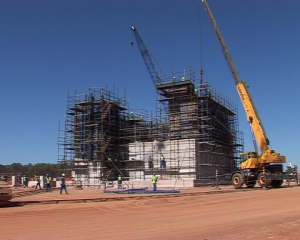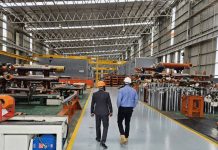No infrastructure, no power, no water, no labour, a deadly fire and a plunging copper price – these are just some of the challenges that were successfully overcome in the planning and construction of Lumwana Mine in North-Western province.
When it opened in 2009, in the presence of State President Rupiah Banda and guests from as far afield as Australia and Canada, the $762 million Lumwana Mine was Zambia’s largest-ever greenfield investment. It was a moment of immense pride and achievement for the government, the local community and international investors.
Yet, Lumwana Mine might never have seen the light of day if it hadn’t been for three factors – technology, politics and finance – coming fortuitously together to make the project possible.
One: technology. When the first copper deposits were discovered in Lumwana way back in 1961, the technology didn’t yet exist to allow them to be mined economically. Big-name companies like Agip of Italy and Phelps-Dodge of the United States had come to Zambia and carried out feasibility studies on the project, but nothing ever came of it.
By 1996, when Australian mining company, Equinox Minerals, arrived on the scene, mining technology had evolved considerably. The availability on the market of massive dump trucks and excavators, gigantic crushing mills and highly computerised processing plants meant Lumwana’s low-grade deposit – 0.7% copper compared to more than 3% on the Copperbelt – could now be mined economically.
Two: politics. Zambia was a stable, peaceful country with a long history of mining, a good mining skills base and, at the time, favourable fiscal policies. Equally important was a modern and globally competitive Mining Act that had been enacted a year earlier to attract international mining investment. This combination proved attractive to Equinox.
The $762m Lumwana project was Zambia’s largest greenfields investment
Three: finance. From 1996 to 2003, Equinox was engaged in intensive exploration work to define the extent of the Lumwana deposit. At the end of it, the company felt confident enough to put together a bankable proposition for the project. To construct and develop the mine would require $762 million – the single-largest mining investment Zambia had ever seen. The only option was to borrow the money. Equinox succeeded in getting a consortium of 14 international banks to provide the debt financing package, which was the largest in the history of mining in Africa.
The projected life of the mine was 37 years, and had been calculated as a function of a number of critical factors – a slightly better copper price, the technology, the efficiencies possible using this technology and the government’s fiscal policies.
“If any one of those parameters goes more negative or more positive, Lumwana shrinks or gets bigger,” says Harry Michael, the then Managing Director of Lumwana Mine, quoted in the video Against all odds – the building of Lumwana Mine.
Even with the investment funding in place, it wasn’t easy for Equinox. Indeed, the real challenges were only beginning and would test the commitment of the company and its backers.
Michael says: “It’s not a surprise to know that before [we] got involved in the Lumwana project, there was effectively no infrastructure to speak of. The road to Lumwana from Solwezi was in very poor condition. Of course, there was no power. There was no water supply to serve a large mining operation. There was no appropriate workers’ housing. The skills would have to come largely from Solwezi or the Copperbelt or Lusaka.”
With those kinds of challenges, Michael says, it’s no wonder that Equinox was the fifth in a long line of investors to take on the challenge of making Lumwana work; the others – who included the Zambian government – had all found the task too daunting.

Equinox got to work. The forest was cleared to make way not just for the open pits where the copper would be mined, but also for the processing plant, a light industrial area and a fully-fledged town. The Lumwana river was deviated from its natural course to permit the construction of a dam serving both the mine and the community. Electrical infrastructure was built to supply both the mine and the community. Thousands of truckloads of parts, machinery and equipment arrived and were assembled on site. Zambian surveyors, geologists and engineers were employed at the highest levels in the construction. Locals from Lumwana were trained in areas ranging from building and construction, to the operation of machinery and equipment. People who had never driven before were successfully turned into skilled drivers of sophisticated $4-million Hitachi dump trucks; many of them were women.
“How do you compete with the men?” one of the women drivers is asked.
“We just do the same [work],” she says, laughing. “We are all men here!”
For many, their lives changed as dramatically as if they’d won the lottery. They went from very basic housing in the village with no electricity or running water to modern-day housing in Lumwana town with all the modern amenities.
The pace of work was relentless, and carried on day and night. There was an army of workers on site. At the height of construction, the kitchens were turning out 15 000 meals every day. The company’s Corporate Social Responsibility programme was already in full swing, with the building of clinics, maternity wards, classrooms and women’s centres for the community.
It wasn’t all plain sailing. Just before the scheduled start of production in July 2008, a power transformer caught fire and damaged vital control equipment for the processing plant. It cost the company $80 million in additional debt funding, and a number of months of lost production at a time when the copper price was high. Then came the financial crisis of 2008, which saw copper plunge 80% within a matter of months. In other countries, some investors ran for cover. But Equinox resolved to hang in and ride out the crash. It proved to be the correct decision, for the market recovered.
Managing Director Harry Michael recalls the time: “Mining is not for the fainthearted! We recognise there are going to be cycles – good cycles and bad cycles.”
The big day arrived on 17 April 2009, when the mine was formally opened in the presence of State President Rupiah Banda, and distinguished guests from Zambia and overseas. The government thanked the mine investors for fulfilling its obligations in seeing the construction through to its completion; the investors thanked the government for fulfilling its obligations in terms of policy and fiscal support.
The Lumwana story is a textbook example of the risks, costs and long lead-times in building a mine and bringing it to full production. It also shows how a mine can economically transform a once impoverished area, creating employment, vital infrastructure and economic opportunity for local inhabitants. And finally, it shows the critical importance of government support and investor-friendly policies, without which there can be no new investment – and hence no new mines.
(Ownership of Lumwana Mine has since passed to the Canadian mining company, Barrick. The mine is now known as Barrick Lumwana. This followed Barrick’s acquisition of Equinox Minerals in 2011.)
See also: Mega-Movers























